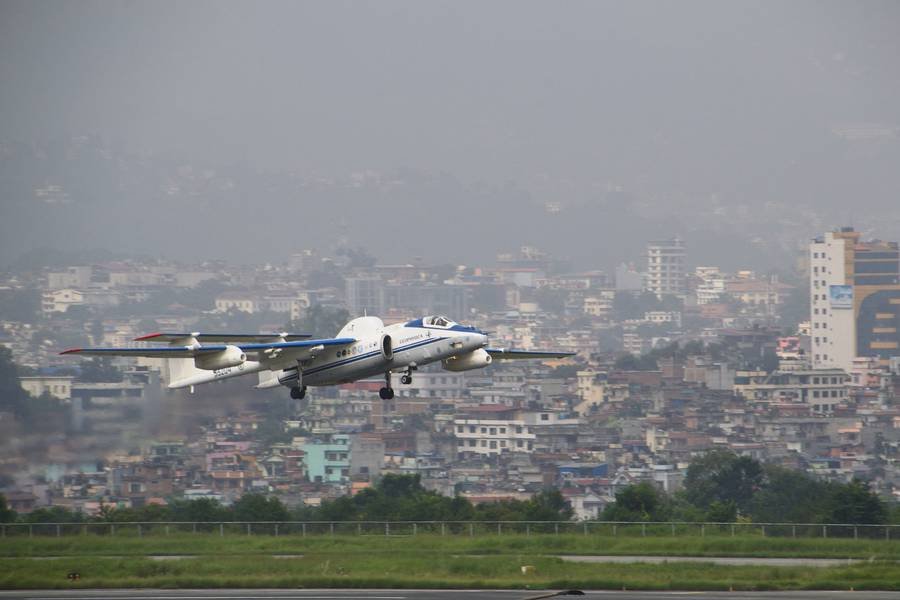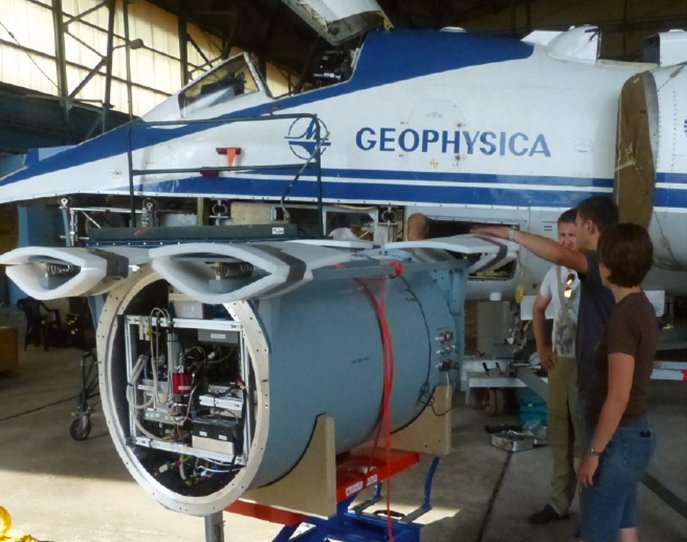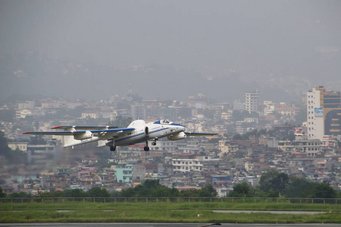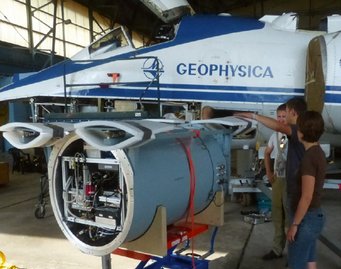Ammonia emissions from agriculture can affect cloud formation over Asia
Climate researchers solve mystery of extended aerosol layer in the atmosphere
The Asian Tropopause Aerosol Layer (ATAL) extends over the Middle East and Asia at an altitude of 12 to 18 kilometers. This accumulation of fine particulate matter was observed from the satellite for the first time during the Asian monsoon of 2008. However, its composition and affect have not been studied until recently. A European consortium of scientists has now been able to show what this layer consists of for the first time. For substantial areas of the ATAL they found a high concentration of ammonium nitrate in the particulate matter. This substance has its origin in gaseous ammonia, a trace gas that is released mainly from agricultural activities. The consortium has presented its findings in the journal Nature Geoscience as part of a study by the Karlsruhe Institute of Technology in collaboration with the Max Planck Institute for Chemistry and the Johannes Gutenberg University Mainz.

The research team investigated the distribution and composition of aerosols in the ATAL using a highly specialized combination of remote sensing and in-situ measurements, meteorological modeling, dedicated cloud-chamber experiments, and detailed atmospheric trajectory simulations. Aerosols are small suspended particles from a variety of natural and man-made sources. They are able to influence the formation of clouds in the atmosphere by acting as condensation nuclei to which gaseous water vapor attaches, whereby cloud droplets are produced. For the first time, the team had the opportunity to operate a research aircraft at altitudes up to 20 km in the upper layers of the Asian monsoon to perform research on key processes of global significance. The various applied experimental methods and instruments complemented each other such that they were able to mutually confirm their results. Participants included scientists from the Karlsruhe Institute of Technology (KIT), the Forschungszentrum Jülich (FZJ), the Johannes Gutenberg University and the Max Planck Institute for Chemistry in Mainz, the Alfred Wegener Institute, the University of Wuppertal as well as the Laboratoire de Météorologie Dynamique in Paris, and the Istituto di Scienze dell'Atmosfera e del Clima in Rome.
“Surprisingly, we were able to determine crystalline ammonium nitrate as the main constituent in large parts of the ATAL," explains Dr. Michael Höpfner from the Institute of Meteorology and Climate Research - Atmospheric Trace Gases and Remote Sensing (IMK-AAF) of the Karlsruhe Institute of Technology (KIT).
“By doing so we have solved the long-standing mystery surrounding the composition of the ATAL,” says Michael Höpfner. Until now it has been considered unlikely that this kind of aerosol could exist at such high altitudes as clouds and precipitation quickly remove the precursor gas ammonia from the atmosphere. "However, we found unprecedented levels of ammonia during the Asian monsoon. The values were up to 50 times higher than in previous measurements,” says Höpfner.
Particulate ammonium nitrate is produced from gaseous ammonia, which is mainly found in agricultural processes and is primarily released into the atmosphere through livestock farming and crop fertilization. The highest levels of ammonia emissions are currently to be found in Asia. During the monsoon the polluted air masses are transported from the earth’s surface to altitudes as high as 18 kilometers. On its way the ammonia reacts to form to ammonium nitrate, an aerosol that affects both the formation and properties of clouds.
On board: The ERICA mass spectrometer – a unique development from Mainz

For the study, which was recently published in the research journal Nature Geoscience, the team of scientists used data from a variety of sources, such as the Mainz-developed ERICA aerosol mass spectrometer. The development of this new instrument was funded by the the European Union through the ERC Advanced Research Grant of Professor Stephan Borrmann. Using mass spectrometric methods, this instrument determines the chemical composition of aerosol particles in-situ during the research flights. “It is extraordinary that the use of such different methods can all produce almost identical results at the same point,” says Professor Stephan Borrmann, Deputy Director of the Institute of Atmospheric Physics, Johannes Gutenberg University Mainz, and Director of the Particle Chemistry Department of the Max Planck Institute for Chemistry. These findings are particularly important in terms of aerosol-cloud interactions, one of the biggest areas of uncertainty in climate modeling. In addition, they show that ammonia emitted at ground level has a major impact on more remote processes in the upper troposphere and possibly on the Asian climate.
The aircraft expedition was part of the StratoClim project, in which 37 scientific organizations from eleven European countries, the USA, Bangladesh, India and Nepal collaborated under the direction of the Alfred Wegener Institute, Helmholtz Center for Polar and Marine Research. The M55 Geophysica high-altitude research aircraft carried 25 specially developed scientific instruments to altitudes of 20 kilometers, approximately twice the ceiling of conventional passenger aircraft. Scientists from Mainz contributed eleven of these instruments.
Chemical analyses carried out by means of the ERICA instrument from Mainz during these flights also demonstrated the presence of traces of sulfurous material in individual fine aerosol particles. Small amounts of particulate sulfate turn the liquid ammonium nitrate solution droplets into solid particles, which also is important for cloud formation.
Further in-situ measurements collected by the Mainz-based scientists on board the Geophysica provided hitherto unavailable, important data on the sizes and quantities of aerosol particles in the ATAL. By using this information, satellite observations can be analyzed and validated.

